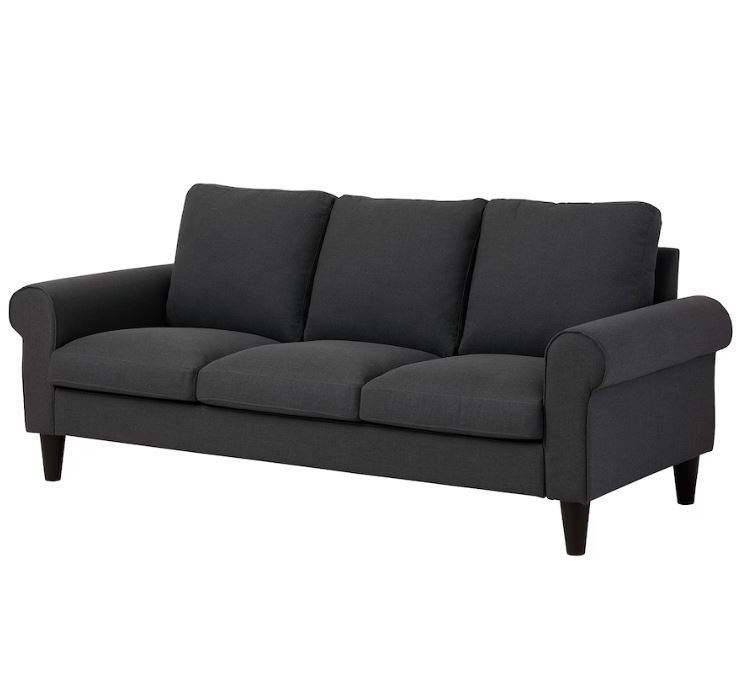In today’s world, sustainability is no longer just a trend—it’s a responsibility. As homeowners and interior designers become increasingly conscious of environmental impacts, sustainable sofa upholstery has emerged as a popular choice. By selecting eco-friendly fabrics and materials, you can create stylish, comfortable, and environmentally responsible living spaces. In this guide, we’ll explore the best sustainable sofa upholstery options, their benefits, maintenance tips, and why eco-friendly choices are becoming essential for modern homes.
Why Choose Sustainable Sofa Upholstery?
Sustainable sofa upholstery is more than just a green label—it’s about making choices that reduce environmental impact while maintaining comfort, style, and durability. Traditional upholstery fabrics, like synthetic fibers or leather sourced from industrial farms, often have high carbon footprints and involve chemicals or processes harmful to the environment.
By opting for sustainable fabrics and materials, you support:
Reduced resource consumption
Lower chemical usage
Less waste in landfills
Ethical production practices
Moreover, eco-friendly sofas often last longer, are healthier for indoor air quality, and align with the growing demand for responsible living.
Top Eco-Friendly Fabrics for Sofa Upholstery
Organic Cotton
Organic cotton is grown without harmful pesticides and synthetic fertilizers, making it a safe and sustainable choice. It is soft, breathable, and available in a wide range of colors and textures. Organic cotton upholstery is perfect for homes seeking a natural, comfortable feel.
Maintenance Tip: Machine wash removable covers with mild detergent or spot clean with a damp cloth for everyday upkeep.
Linen
Linen, made from flax plants, is a renewable, biodegradable fabric with minimal environmental impact. It is naturally hypoallergenic, durable, and has a luxurious, textured look. Linen sofas exude elegance while being sustainable.
Maintenance Tip: Vacuum regularly and use a gentle, natural cleaner for spills. Avoid harsh chemicals to preserve the fabric’s natural texture.
Hemp
Hemp is one of the most sustainable fibers available, requiring minimal water and no pesticides. Hemp fabric is strong, durable, and resistant to wear, making it ideal for high-traffic areas. Its natural texture adds rustic charm and a unique aesthetic to sofas.
Maintenance Tip: Spot clean with mild soap and water; hemp may soften over time, enhancing its comfort.
Recycled Fabrics
Fabrics made from recycled materials, such as PET bottles or repurposed textiles, are gaining popularity in eco-friendly upholstery. These fabrics reduce waste and often come in stylish weaves and patterns suitable for contemporary homes.
Maintenance Tip: Follow the manufacturer’s instructions, as recycled fabrics vary in durability and care requirements.
Plant-Based Leather Alternatives
Traditional leather has a significant environmental impact due to livestock farming and tanning processes. Plant-based leather, made from materials like pineapple leaves (Piñatex), cork, or apple waste, offers a cruelty-free and eco-conscious alternative. These materials are durable, water-resistant, and increasingly available in stylish finishes.
Maintenance Tip: Wipe clean with a damp cloth; avoid harsh chemicals to maintain the surface and longevity.
Benefits of Choosing Sustainable Sofa Upholstery
Eco-Friendly and Low-Impact:
Sustainable fabrics reduce chemical usage, conserve water, and minimize environmental damage.
Durability and Longevity:
Natural fibers like hemp and linen are highly durable, while recycled fabrics often include robust synthetic blends, making eco-friendly sofas long-lasting investments.
Healthier Indoor Environment:
Eco-friendly fabrics often avoid harmful chemicals, dyes, and flame retardants, improving indoor air quality and making them ideal for households with children or pets.
Unique Aesthetic Appeal:
Sustainable materials bring natural textures and earthy tones that enhance modern and rustic interiors alike. Each eco-friendly fabric offers a distinct character, adding personality to your space.
Tips for Maintaining Eco-Friendly Sofa Upholstery
Regular Cleaning:
Vacuum frequently using a soft brush attachment to remove dust and dirt.
Spot Cleaning:
Address spills immediately with mild soap and water or recommended eco-friendly cleaning products.
Avoid Excessive Sunlight:
Direct sunlight can fade fabrics over time. Use curtains or blinds to protect your upholstery.
Rotate Cushions:
Flipping and rotating cushions regularly helps maintain shape and prevents uneven wear.
Professional Cleaning:
Consider professional eco-friendly upholstery cleaning every 1–2 years to keep fabrics fresh without compromising sustainability.
Why Sustainable Sofa Upholstery Is the Future
Sustainable sofa upholstery is more than a conscious choice; it’s a lifestyle shift. Modern homeowners are seeking furniture that aligns with environmental values without sacrificing comfort or style. From luxurious linen Sofa Upholstery Abu Dhabi to innovative plant-based leather alternatives, eco-friendly materials offer versatility, durability, and elegance.
By choosing sustainable fabrics, you not only reduce your environmental footprint but also invest in furniture that supports a healthier, longer-lasting home environment. Whether you’re designing a contemporary living room, a cozy family space, or an eco-conscious office, sustainable sofa upholstery is a choice that combines aesthetics, functionality, and responsibility.
Conclusion
Sustainable sofa upholstery is an essential consideration for homeowners looking to merge style with environmental responsibility. Organic cotton, linen, hemp, recycled fabrics, and plant-based leather alternatives offer a wide range of options that are durable, elegant, and eco-friendly.
By implementing proper maintenance practices and choosing quality sustainable materials, your sofa can remain comfortable, stylish, and environmentally responsible for years to come. Investing in eco-friendly upholstery is a small step toward a greener lifestyle, proving that beautiful interiors and sustainability can coexist effortlessly.




